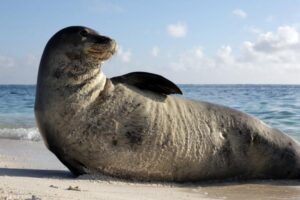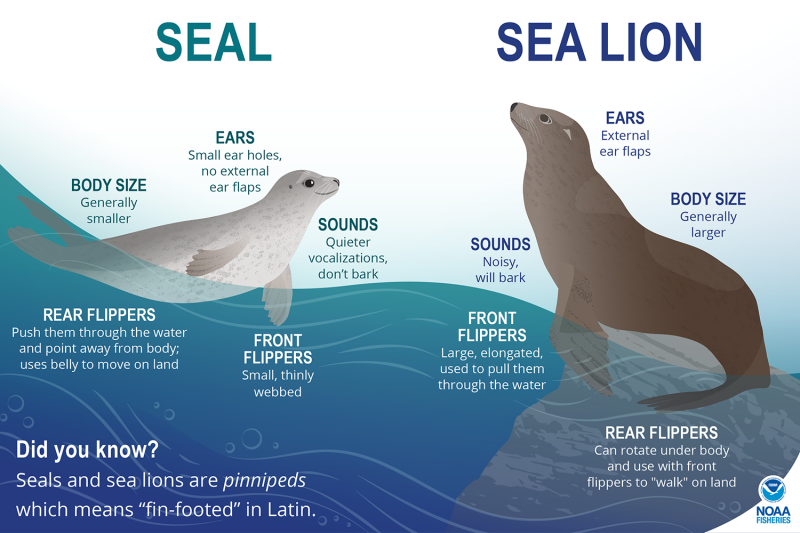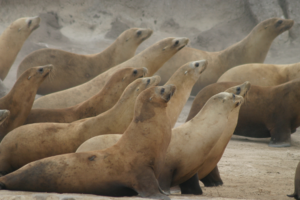Seals and sea lions are both pinnipeds, but there are distinct characteristics to tell them apart.
Seals and sea lions, along with walruses, belong to a group of marine mammals called “pinnipeds.” Pinniped means fin or flipper-footed in Latin. These animals spend the majority of their time in the ocean, but come on shore for long periods of time. Although seals and sea lions have similarities, they also have several distinct characteristics and adaptations that distinguish them from one another.
What Are the Differences Between Seals and Sea Lions?
Seals
“True” seals, also known as “earless” seals or simply “seals,” belong to a group of pinnipeds that have ear holes, but lack an external ear flap. This includes species such as the harbor seal, endangered Hawaiian monk seal, and harp seal.
Seals typically have a smaller body size compared to sea lions. But some, the Northern elephant seal and hooded seal, can be larger.
On land, seals use their bellies to move around because they have small front flippers that are thinly webbed with a claw on each small toe. In the water, seals swim easily, moving their rear flippers back and forth, similar to how a fish uses its caudal fin (tail) to propel itself through the water.
In general, seals tend to be quiet, and vocalize through noises such as soft grunts, growls, or hisses. Many are less social than sea lion species, especially in the water, but seals can be found on land together to avoid predators, rest, mate, and nurse their pups.

Read more at fisheries.noaa.gov.


